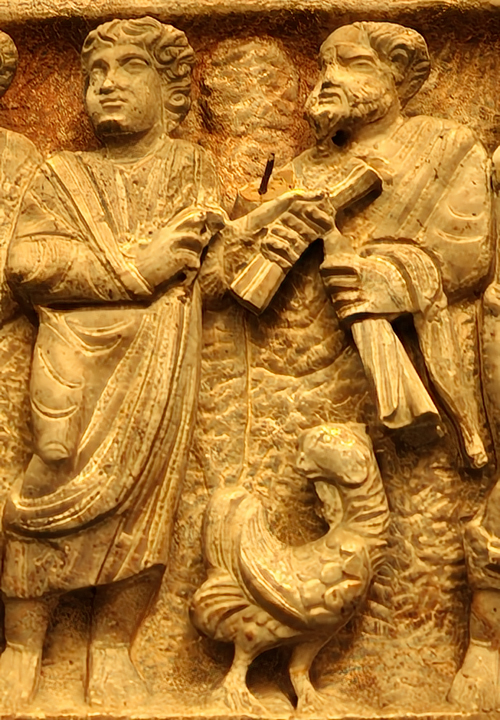
In early Christian art St. Peter was always portrayed with a rooster beside him.
A very early example sits in The Museo Pio Cristiano in the Vatican. The museum features a collection of early Christian sarcophagi, which were coffins or tombs used for burial, often adorned with Christian imagery and scenes.
One such display shows the front of a double-register stone sarcophagus dated around 300 – 325.
On the relief Jesus is pictured as a young man without a beard. He is handing Peter the scroll that represents his authority as a teacher, an allusion to his charge to Peter after the resurrection: “feed my sheep” (John 21:17).
At the feet of both Jesus and Peter stands a rooster; the reality of Peter’s denial of knowing Jesus (John 13:38, 18: 25 – 27).
The juxtaposition of each occasion is very evident.
Jesus is handing to the one who denied knowing him the responsibility of leadership.
The idea that “opposites attract” has roots in both ancient philosophical thought and modern psychology.
As Christians this was most graphically experienced for us in our Easter liturgies.
We read the story of Jesus’ Passion and Death, and twice we heard read that Jesus hung between two thieves.
And, we have given names to each of them: we have called one, ‘The Good Thief’ and one ‘The Bad Thief’.
Jesus has his arms outstretched between the two; is he, perhaps, attempting to bring the two together?
The act of crucifixion is after all an act of reconciliation!
Do I allow Jesus to hang between the “good” me and the “bad” me?
Do I allow the act of reconciliation take place within me?
The bishop of Hippo, St Augustine (354 – 430) reminds us, “This is the very perfection of a person, to find out our own imperfections.”
